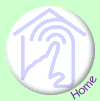|
|
|
|
Every subsystem must pass certification in order for it to be integrated with an HMS.
This is a process similar to conformance testing that subsystems must pass in
order to receive industry certification for standards compliance. If a subsystem
has passed an industry standard protocol conformance test then there is no need
to have ESC certify the subsystem. However, since few subsystems on the market
today conform to any industry standard, there is a great unknown when attempting
to integrate a subsystem with a home control system. This is not a situation unique
to ESC. Every system integrator is faced with the same problem — How does one
know a subsystem's remote control capabilities if it is not certified to a published
standard? The answer is that each subsystem must be evaluated on its own merits.
ESC has established guidelies for the requisite command and control of subsystems that have remote communication capabilities. The certification process is designed to evaluate and document the capabilities of a subsystem's remote control communications interface, typically some form of serial communications interface (e.g. RS-232). The certification report that we generate details our findings in a way that makes it easy for a systems integrator to compare and contrast the various subsystems to determine the viability of a subsystem in a particular application and the level of integration required. ESC has established this service in an attempt to help unify the home management industry, establish an integration database open to all for reference, and to foster an open forum of communications between manufacturers and integrators. The certification is typically initiated by the subsystem manufacturer in order to gain acceptance by the home systems community. It also can be performed at the request of homeowners, dealers, installers, builders, architects, or anyone else with a vested interest in a subsystem's integration and use in a home management system. Due to the simplicity of their control capabilities, subsystems that can only be controlled by infrared (IR) remotes or a discreet digital interface (contact or voltage input and output) do not require certification. ESC certification has two levels: qualified and certified. These levels are explained in detail below. Qualification A qualified subsystem is one that meets at least the following basic criteria for integration:
Qualification requires manufacturers to submit to ESC the following materials:
ESC reviews all documentation and discusses the technical merits with subcontractors and manufacturers to determine if the subsystem provides the necessary command, control, and query capabilities. Subsystem qualification does not guarantee certification, but provides a first-pass cut of those subsystems that will definately not pass certification. The main purpose behind the qualification process is the minimization of risk (i.e. time and cost) in the certification process. Qualifed subsystems stand an excellent chance of passing certification. The fee for subsystem qualification is US$1,500 and usually takes about three weeks to complete (after receipt of all documentation). Neither ESC, its representatives, nor its dealers make any profit on this service. The manufacturer and the qualified product will be added to the list below, and a separate page of qualification notes is also provided on this site. Certification A certified subsystem is one that passes the physical integration process. During certification, ESC prototypes interface hardware and software and verifies the subsystem's communication capabilities and functionality against its documentation. Further stress testing is performed using an actual Home Management System to identify weaknesses in the communication protocols and verify fitness of the subsystem for computer control. ESC requires a typical complement of subsystem hardware and software for testing that is representative of a real application. Subsystem components are normally provided by the manufacturer or subcontractor. Once certified, a subsystem is guaranteed to integrate with an HMS. The fee for the certification varies with the complexity of the subsystem along with the quality, quantity, level of detail and accuracy of available documentation. Typically certification fees are between US$3,000 and US$8,000. Certification of a subsystem typically take about 4 to 8 weeks (after receipt of subsystem hardware and software). Neither ESC, its representatives, nor its dealers make any profit on this service. The manufacturer and the certified product will be added to the list below, and a separate page of certification notes will be provided on this site. Field-Testing Whereas this is not an official phase of the certification process, a field-tested subsystem is one that has been used in an actual installation. Whereas certification guarantees subsystem operation with an HMS, user related items (e.g. user-interface ease of use, subsystem suitability to real world applications, etc.) can only be evaluated under real world conditions. ESC's experience with a subsystem in the field, along with client acceptance, forms the basis of a field-tested subsystem. Field notes on the subsystem will be added as appropriate. Certified Subsystem List The subsystems listed below have gone through, or are in the process of going through, the certification process. They have been certified and field-tested unless otherwise noted. The list is dynamic and new subsystems are constantly being added. In a future update we will be publishing the certification reports for each of these subsystems.
|
|
design process | controls | software | hardware | installation | service | pricing | catalog home page | what is home management? | who are we? | who are our clients? | our product | reference designs | contact us today! privacy policy Copyright © 1999-2007 Electronic Solutions Co. All rights reserved. This page was last updated on 31 May 2007. |

856-733-0008